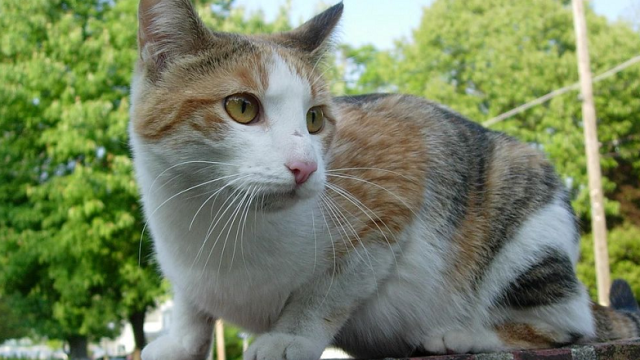Cats kill billions of small mammals, reptiles, and birds every year. In environments where cats have natural predators, like coyotes in parts of the United States, this isn’t a problem. But left unchecked, cats can become an invasive species that damages local ecosystems.
Image by Neal Ziring
There’s no question that cats are prolific killers. A 2013 study found that between 1.4 billion and 3.7 billion birds, and between 6.9 billion and 20.7 billion wild mammals fall prey to free-ranging cats in the U.S. every year. “They’re an invasive species that can reach outlandishly high densities if left unchecked,” zoologist Roland Kays of North Carolina State University told Gizmodo, and Kays isn’t the first ecologist to make that assertion.
Ecologists aren’t exactly sure how cats’ hunting habits might impact ecosystems and biodiversity, but the answer probably depends on exactly what kind of prey the cats are hunting. How many of those billions of little animals come from species that are already threatened or endangered, and how many come from species that reproduce fast enough, and survive in large enough numbers, to keep up with the predators? That, according to Kays and his colleagues, depends on where the cats hunt.
Location, Location, Location
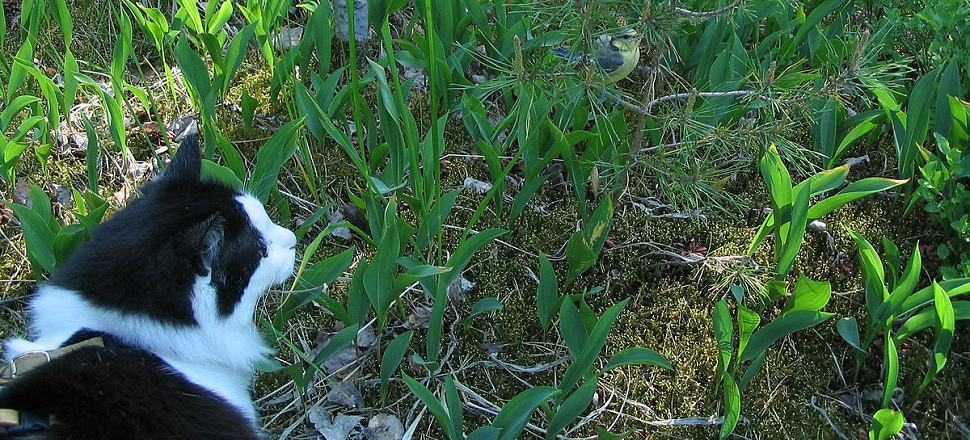
Image by Ilmari Karonen
Some ecosystems are more vulnerable than others. Cats can wreak havoc on islands, for example. On many islands, mammalian predators are rare, so birds, small mammals, and small reptiles often evolve without protection against predators like cats. So when domestic cats arrive on an island, they can easily hunt species to extinction. Already, domestic cats have completely wiped out 18 island species around the world, and they’re the primary threat to another 36 critically endangered species. That may be a drop in the bucket in terms of the current mass extinction but under the circumstances, biodiversity needs all the help it can get.
On the other hand, ecologists aren’t yet sure what impact cats might have in inland regions of a big continent like North America. Ecosystems on continents tend to be more robust, since mammalian predators — wolves, coyotes, and big cats — are a natural part of the equation. But ecologists say there’s still cause for concern, and recent studies have focused on the ecological impact of the 84 million free-ranging pet cats and 30-80 million feral cats in the U.S.
To find out where cats were hunting, Kays and 486 volunteer citizen scientists, undergraduates, and middle school students set up motion-trap cameras to monitor domestic cat activity at 2100 sites across the eastern U.S. They monitored 32 protected wilderness areas in six eastern states, as well as neighbourhoods and urban green spaces in Raleigh, North Carolina.
“We might expect cats using residential areas to hunt primarily common prey species that are of lower conservation concern,” they wrote in a recent paper in the Journal of Mammalogy, but if cats hunt on protected public lands, they could be a bigger threat to biodiversity.
Where Coyotes Roam
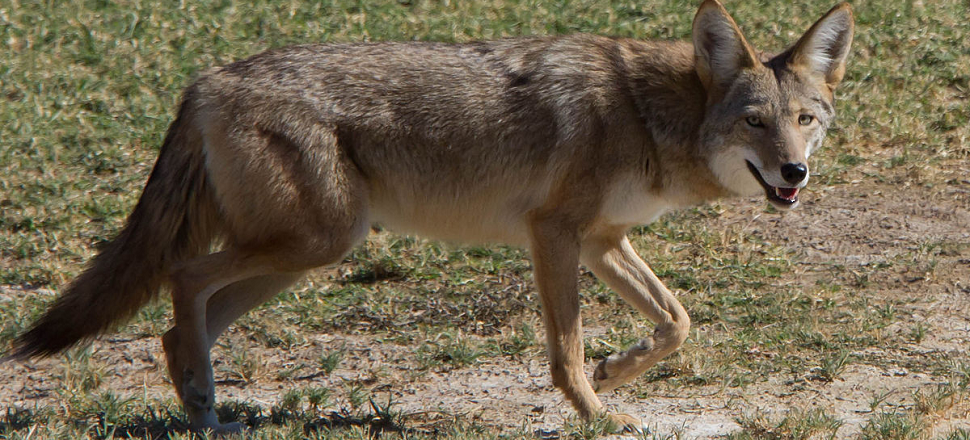
Image by Dawn Beattie
It turns out that coyotes seem to keep cats out of protected wildlife habitats in the U.S., such as state parks and nature preserves. Kays and his colleagues didn’t see very many cats hunting in protected areas: only about 55 cat sightings in three April-to-November seasons of monitoring. According to the study, the chance of finding a domestic cat in a protected area in the eastern U.S. is about 1.6%.
Kays and his colleagues say that’s because larger predators like coyotes deter cats from hunting in their territory. In the protected areas in the study, coyotes showed up on camera 33 times more often than cats. A 1997 study confirmed that coyotes do prey on cats, after all, and Kays said his team’s findings suggest “that there is a low threshold level of coyote activity that effectively prevents cats from using an area, and that most of the relatively large, protected areas we surveyed were above that level.”
Of course, most of the large protected areas in the camera-trap study were far from the nearest residential neighbourhood, or even the nearest house, so it’s probably no surprise that few cats ventured into such remote areas. Kays and his colleagues wrote, “This shows the limited degree to which most urban cats venture past their neighbourhoods,” and they say it matches what they found in an earlier radio tracking study of pet cats’ wanderings.
Kays and his colleagues say that the lone cats that roamed a few of the parks may have been driven into the wilderness and abandoned by their owners, although a few may have been remarkably far-ranging pets. The researchers suggested that these cats may not yet have learned about the local coyote populations, so they had no reason to avoid the areas.
In their paper, the researchers wrote, “the amount of coyote activity and housing density are the best predictors of cat activity.”
Those findings mean that free-ranging cats probably aren’t a major ecological concern for state parks and other large nature preserves. “I think it shows that the protected areas that have predators in them are sort of safe from marauding populations of cats,” Kays told Gizmodo. “Native predators like coyotes, can sort of maintain the balance of nature and prevent invasive species from reaching outlandish densities where they would start causing a lot of trouble.”
Cats in the City
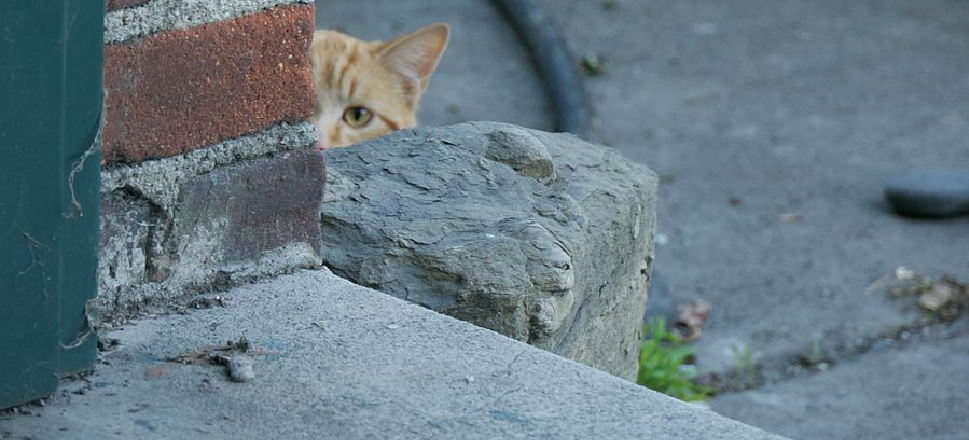
Image by Greg Mote
Instead, cats stick close to residential areas. In Raleigh, Kays’ camera traps found that cats had a 53% chance of showing up in residential yards. Meanwhile, coyotes are very rare in most residential neighbourhoods in the eastern U.S., although they’re becoming more common sights in the western half of the country. In the Raleigh study, coyotes had only an 8.5% chance of showing up in yards.
And, according to Kays, in western states where coyotes more often venture into neighbourhoods, their presence has an impact on the number of cats that roam outdoors. “When you go to parts of southern California that have had coyotes living in backyards for a longer time, you see this sort of wave of missing cat posters that go up when coyotes move in,” he told Gizmodo. “And then that goes away because people stop letting their cats out, because they realise it just doesn’t work.”
Cats were also frequent visitors to small forested spaces in the city. In these little patches of urban woodland, cats and coyotes actually shared the same hunting grounds; the chance of seeing a cat in these spaces on a given night was about 27%, compared with 57% for coyotes.
Coyotes and cats seem to prefer different core hunting areas — residential yards for cats, and wilderness areas for coyotes — but overlap in urban green spaces. It’s increasingly common for coyotes’ hunting ranges to include developed areas, even in the eastern U.S. Meanwhile, small forested in the middle of a city give cats a prey-rich place to hunt within their usual ranges, and Kay and his colleagues suggested that familiar urban refuges, like fenced yards, are within easy reach for cats if they run into a coyote.
On the Margins

Image by Rudolph A. Furtado
And it’s environments like these — close to houses and on the boundary between human and wildlife habitats — where ecologists say cats could threaten ecosystems.
“What we found is that this isn’t a big concern for these larger protected areas, but that this still could be a concern for endangered species that live near people,” Kays explained, adding, “and you know, people live in more and more of the landscape every year, so that’s still an issue, but it just shows where we need to focus our conservation efforts.”
In rural areas, for instance, free-ranging cats have easier access to wildlife habitats that aren’t protected wilderness areas but could still be home to threatened species or vulnerable ecosystems. That’s especially true in places where human development is encroaching on former wilderness. And in agricultural areas, the margins of field and woodland are harbours of biodiversity — and they also offer easy access for roving cats.
And coastal areas are especially vulnerable. Kays told Gizmodo, “One good example is beach-nesting birds, because there’s almost always people living near the beach, and these birds are nesting very near there, and there’s a number of quite endangered beach-nesting birds that I think could be at great risk from cats.”
The Ecology of Feral Cats
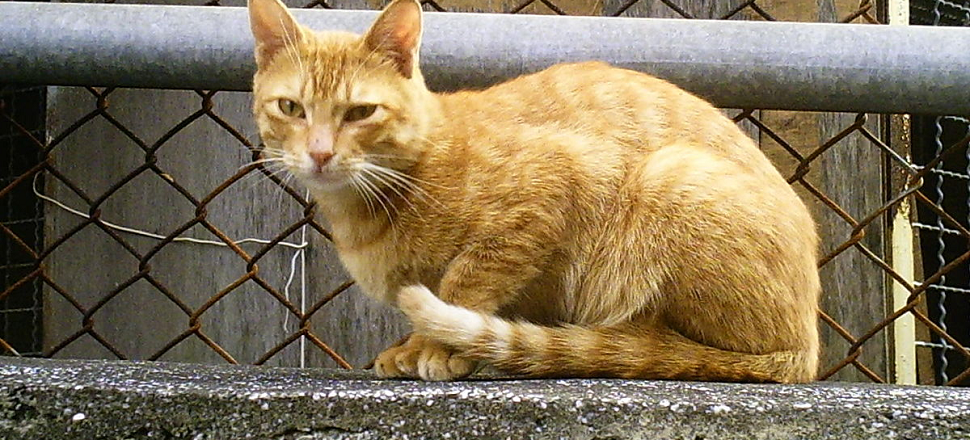
Image by Smallmiew
The greatest risk to wildlife is probably from colonies of unowned, feral cats, rather than roaming pets. Cats without owners probably account for about 69% of bird kills and 89% of mammal kills, according to ecologist Scott Loss and his colleagues in their 2013 study.
The obvious problem is that feral cats spend all of their time outside, unlike pet cats who might only be out during the day, or only for part of the day, and that means more opportunity to hunt. In fact, a recent study in the UK found that the amount of time a cat spent outside was the most important factor in how many kills the cat brought home.
But there’s another ecological problem with feral cats. “When cats cause really big trouble is when they get to have really high populations, which happens because they get free food from people,” Kays told Gizmodo. In nature, predator populations tend to be limited by how much food is available. If the predators get too numerous, they will kill too many of the prey species. That means less food will be available, so the predator species will die off until it’s small enough for the ecosystem to support.
The problem is that many feral cat colonies get extra food from well-meaning people. “They can reach populations of predators that aren’t seen in nature because they’re supplemented with food,” said Kays.
He told Gizmodo that although feeding feral cat colonies seems like a humane gesture, it’s not a good idea for the cats or the ecosystem. “That’s created these artificially high cat populations, and as long as you’re putting food out there, you’re going to be attracting these cats, and you’re going to end up with a giant group of cats that are causing trouble,” he said, “and if there are any native species living nearby, any birds, you’re creating a giant predation pit for them. So, the easy solution is don’t put the food out, because then you won’t have the trouble.”
Kays added, “The other obvious answer is to spay and neuter your pets, so you don’t have too many cats.”
